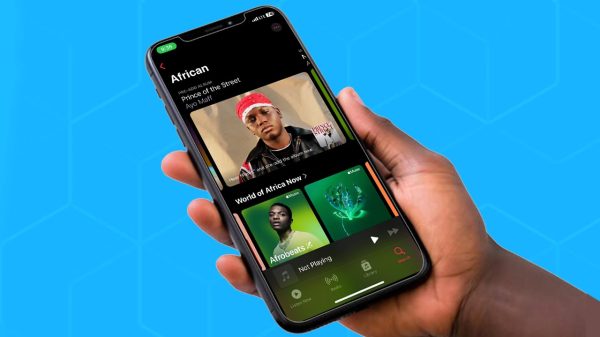Imagine you have a robot friend who can think, learn, and make decisions—just like a human, but faster and with way more memory. That’s what Artificial Intelligence (AI) is all about! AI is a type of technology that enables machines to do things that normally require human intelligence, such as understanding language, recognizing images, and even making decisions.
AI is everywhere! From the recommendations you see on Netflix to voice assistants like Siri and Alexa, AI is working behind the scenes to make life easier. But how does it actually work? Let’s break it down.
How Does AI Work?
At its core, AI works by processing large amounts of data, finding patterns, and using those patterns to make decisions. Imagine teaching a child to recognize a dog. You’d show them many pictures of dogs and explain, “This is a dog.” Over time, they learn what makes a dog a dog. AI does something similar, but much faster and with thousands or even millions of examples.
Here’s a simple breakdown of how AI works:
| Step | What Happens? |
|---|---|
| 1. Data Collection | AI collects data from different sources (like text, images, or videos). |
| 2. Learning | AI studies the data and looks for patterns. |
| 3. Training | AI fine-tunes its knowledge, learning from mistakes to get better. |
| 4. Decision Making | AI applies what it has learned to new situations, making predictions or decisions. |
| 5. Improvement | AI keeps learning over time, improving its accuracy. |
Types of AI
Not all AI is the same. There are different types of AI based on what they can do.
1. Narrow AI (Weak AI)
- This type of AI is designed to do one specific task.
- Examples:
- Google Translate (translates languages)
- Spotify’s music recommendations
- Self-driving car navigation systems
2. General AI (Strong AI)
- This AI would be able to think and learn just like a human. It doesn’t exist yet, but scientists are working on it!
3. Super AI
- This is a hypothetical AI that would be smarter than humans in every way. Movies like The Terminator or Ex Machina explore what could happen if super AI became real.
Machine Learning: AI’s Superpower
One of the most important parts of AI is Machine Learning (ML). Instead of programming a machine with step-by-step instructions, ML allows AI to learn from data and improve over time.
There are three main types of machine learning:
| Type | How It Works | Example |
| Supervised Learning | AI learns from labeled examples. | Teaching AI to recognize cats by showing pictures labeled “cat” or “not cat.” |
| Unsupervised Learning | AI finds patterns on its own. | AI grouping similar shopping habits together. |
| Reinforcement Learning | AI learns by trial and error. | Teaching a robot to play chess by rewarding good moves. |
Natural Language Processing (NLP)
Ever talked to Siri or Google Assistant? That’s AI using Natural Language Processing (NLP) to understand and respond to human speech. NLP helps AI read, write, and even translate languages. It’s why chatbots can answer customer service questions and why autocorrect fixes your spelling mistakes.
Generative AI: The AI That Creates
Generative AI is a special type of AI that creates new content, like text, images, and music. You’ve probably heard of ChatGPT (for writing) or DALL·E (for generating images). These AI tools don’t just analyze data—they produce something new based on patterns they’ve learned.
How Generative AI Works:
- Training on Large Datasets – The AI studies thousands of books, images, or songs.
- Learning Patterns – It understands how different elements fit together.
- Creating New Content – The AI generates something brand new, like a poem or artwork.
Example: AI writing a new song in the style of your favorite artist!
The Benefits of AI
AI is changing the world, making things faster, smarter, and more efficient. Here are some ways AI helps us:
| Benefit | Example |
| Automation | AI robots in factories assemble cars. |
| Better Healthcare | AI helps doctors detect diseases faster. |
| Personalization | Netflix suggests movies you might like. |
| Faster Customer Service | Chatbots answer questions instantly. |
| Safer Transportation | AI helps self-driving cars avoid accidents. |
The Future of AI
AI is constantly improving and becoming more powerful. In the future, we might see:
- AI-powered teachers that personalize lessons for every student.
- AI doctors diagnosing diseases faster and more accurately.
- AI assistants handling all our daily tasks.
But with great power comes great responsibility. Scientists and experts are working to make sure AI is used safely and ethically.
Artificial Intelligence is an exciting and powerful technology that is already shaping our world. From voice assistants to self-driving cars, AI is helping us in ways we never imagined. As AI continues to grow, it will bring even more innovations, making life easier, smarter, and more efficient.
So next time you ask Siri a question or get a movie recommendation on Netflix, remember—you’re interacting with AI!
FAQs
What are AI tools used for?
AI tools are software and platforms that help in building, training, and deploying AI models. Examples include machine learning frameworks like TensorFlow and PyTorch, pre-trained models such as GPT and BERT, and APIs for tasks like image processing, natural language processing, and data analysis. AI is also used in applications like chatbots, recommendation engines, and automation systems.
How does Bing use AI?
Bing leverages AI to improve search accuracy, personalize search results, and power tools like Bing Image Creator, which allows users to generate images using AI models.
Is AI beneficial or harmful?
AI has both advantages and risks. It enhances efficiency, advances medical research, automates repetitive tasks, and helps solve complex problems. However, concerns include job losses, privacy risks, bias in decision-making, and the potential for misuse. Its impact depends on responsible development and regulation.
How do AI image generators work?
AI image generators use machine learning models to create or enhance visuals based on text descriptions. Tools like DALL-E, Stable Diffusion, and MidJourney allow users to generate unique images in a creative and efficient manner.
What is Gemini AI?
Gemini AI is an advanced artificial intelligence system designed to provide data-driven insights and business solutions. It helps organizations make strategic decisions by leveraging AI-powered analytics.
What is meant by Artificial Intelligence 3?
Artificial Intelligence 3 may refer to the third generation of AI, focusing on advancements in neural networks, deep learning, and AI systems capable of more human-like reasoning. However, its meaning can vary depending on the context.
What are the four categories of AI?
AI is generally classified into four types:
- Reactive Machines – These systems process only current inputs and do not retain past data, such as simple chess programs.
- Limited Memory – AI models that learn from past data to improve decision-making, including self-driving cars.
- Theory of Mind – A theoretical AI that could understand human emotions and thoughts for better interaction.
- Self-Aware AI – The most advanced concept, where AI would have its own consciousness, though it does not yet exist.
What is Playground AI?
Playground AI refers to experimental platforms that allow users to interact with AI technologies in an accessible way. These tools are often designed for learning, creativity, or testing AI capabilities.
How is AI used in daily life?
AI is integrated into many aspects of everyday life. It powers digital assistants like Siri and Alexa, improves content recommendations on Netflix and Amazon, and enhances image and voice recognition on smartphones. It also plays a crucial role in healthcare (diagnostics and drug discovery), finance (fraud detection and trading algorithms), autonomous vehicles, customer support chatbots, and even creative fields such as music and digital art.






























